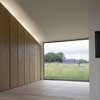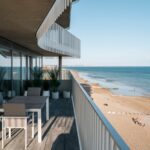RIBA Manser Medal Shortlist 2012, UK, Winner, Buildings, Architecture, Projects
RIBA Manser Medal 2012
Royal Institute of British Architects Prize – Buildings + Architects: maison L, Yvelines, France
13 Oct 2012
RIBA Manser Medal Winner 2012
maison L, Yvelines, France
architecturespossibles

photo : George Dupin
maison L Yvelines
The brief suggested the L-shaped general plan and the use of an indigenous stone for retaining walls. But it did not suggest half burying a series of interconnecting cave-like rooms, nor the five three-storey board-marked concrete towers that poke out of the rockery roof. This is where the genius of the architect comes in.
13 Sep 2012
RIBA Manser Medal 2012 Shortlist
RIBA Manser Medal 2012 for the best new house – shortlist
Two subterranean extensions: one to a gamekeeper’s cottage in Gloucestershire, the other to a French orangery, the imaginative linking of a pair of East Sussex oast houses, the latest architect-designed seaside holiday home to let, and two elegant and sustainable new houses in Cornwall make up the shortlist for the RIBA Manser Medal 2012 for the best new house, the UK’s pre-eminent private housing design award.
The houses shortlisted for the 2012 RIBA Manser Medal:
• The Dune House in Thorpeness, Suffolk by Jarmund Vigsnaes Architects & Mole Architects
• Private house in Gloucestershire by Found Associates
• Private house in East Sussex by Duggan Morris Architects
• Two Passive Solar Gain Houses, Porthadown, Cornwall by Simon Conder Associates
• Maison L, Ile de France by Christian Pottgiesser – Architecture Possibles
The Dune House, Suffolk
Jarmund Vigsnaes Architects & Mole Architects
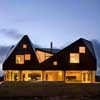
image : Chris Wright
The Dune House
Private House, Gloucestershire
Found Associates
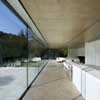
photo © Hufton & Crow
House in Gloucestershire
maison L, Yvelines, France
architecturespossibles

photo : George Dupin
maison L Yvelines
Private house in East Sussex
Duggan Morris Architects

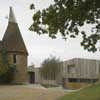
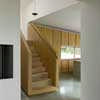
photos : James Brittain
The RIBA Manser Medal 2012 shortlist has been chosen from winners of RIBA Awards and RIBA regional awards. The winner will be announced at the RIBA Stirling Prize dinner on 13 September 2012 in Manchester. The winning architect and client will receive trophies designed by the artist Petr Weigl.
Previous winners include Hampstead Lane by Duggan Morris (2011), Acme for Hunsett Mill (2010), Pitman Tozer Architects for The Gap House (2009), Rogers Stirk Harbour + Partners for Oxley Woods (2008) and Alison Brooks Architects for the Salt House (2007).
This year’s judges include: Michael Manser CBE, architect; Lady Jill Ritblat; and Tony Chapman, Hon FRIBA, RIBA Head of Awards.
Private house, East Sussex
Architect: Duggan Morris Architects
Client: Private
Contractor: Northlake Limited
Consultants: Stephen Evans Associates ; Brooks Devlin
Contract Value: confidential
Date of completion: February 2011
Gross internal area: 433 sqm
The project was aimed at creating a unified series of flowing, contemporary spaces linked to the rolling landscape setting. The brief also called for a building with character and personality, respectful of the existing Oast house, and taking advantage of the views. The architects have rediscovered the integrity of the building through careful observation and research and have made the new additions and alterations work harmoniously with the old so as to create a new whole.
The original building was given a thorough but sensitive makeover, removing all the accretions of centuries: garage, study and kitchen wing. On their footprint is the new annex. What remained was carefully analysed and repaired appropriately. As a result the shape, form, scale and quality of the two hundred year old building is easily discernible against the new annex. The annex itself is an altogether more sculptural and dynamic form of interconnecting volumes entirely clad in a stable, durable, engineered timber boarding, orientated vertically, in contrast to the rough sawn horizontal ship-lapping timber cladding of the oast barn. Equally, the external massing and form of the building is very much an expression of the internal function of each room.
A conflict between the needs of the client and the demands of conservation officials who wanted the replication of a traditional farm building aesthetic has been brilliantly resolved by breaking up and part burying the new building so it appears to be a collection of cellular timber outbuildings dominated by the bulk of the two oast-houses. Yet internally it is quite the reverse. The ‘separate’ barns form a beautiful continuous flowing open plan living area linking into bedrooms in the restored oast-houses.
The architects have created a dwelling which reflects an exemplary approach to contemporary rural renovation work; and produced a flexible living environment for a growing family within exceptional surroundings.
Two Passive Solar Gain Houses in Porthtowan
Avenue 3 Eastcliff, Porthtowan, Truro, Cornwall
Architect: Simon Condor Associates
Client: Private
Structural Engineer: Fluid Structures
Contractor: T&D Carter Ltd
Contract Value: £ 928,158
Date of completion: February 2012
Gross internal area: 327 sqm
These sibling houses – one a family home, the other an artist’s studio at upper ground floor level and guest apartment – are surrounded by a suburban estate of 1950s bungalows yet they overlook the beach in the village of Porthtowan on the north Cornish coast, with views down the coast to St Ives.
Clad entirely in timber, including the flat roofs and immaculately detailed, they are created out of a strong, simple and confident diagram which exploits fully the location and the enviable views.
Built into the 1 in 7 slope, the project is respectful of its neighbours, nestling into the ground to prevent obstructing their fine sea views. This site strategy also establishes a simple but successful passive sustainable approach: thermal mass, solar gain and natural ventilation each being exploited, with no sense of claustrophobia resulting from the semi-buried forms.
A skilful manipulation of plan and section ensures that all main spaces benefit from the expansive views. On this hillside location, a successful balance is achieved between feeling exposed and contained, allowing occupants to enjoy a strong relationship with what, at times, must be very extreme weather conditions, whilst feeling secure and protected.
The houses use a combination of fully glazed southern elevations and high mass construction for the remainder of the houses in order to reduce energy costs. Overheating in summer is dealt with by setting back the glazed elevations behind hardwood verandahs which also provide balconies and allow the much lower winter sun to penetrate deep into the two houses. The external cladding, roof decking and verandah structures are all made from FSC certified hardwood which has been left unfinished to weather naturally to a silvery grey.
With very low energy consumption, consistent, elegant detailing and construction, these houses are great examples of how thoughtful, modest and economic architecture can create a passive sustainable living environment. In responding to the clients’ very detailed brief, the architect has developed a special home and studio that meets, precisely, their exacting requirements.
RIBA Manser Medal Winner information from Royal Institute of British Architects
Location: UK
RIBA Awards
Architectural Design
RIAS Award for Architecture – Best Building in Scotland
Comments / photos for the RIBA Manser Medal Award 2012 page welcome

